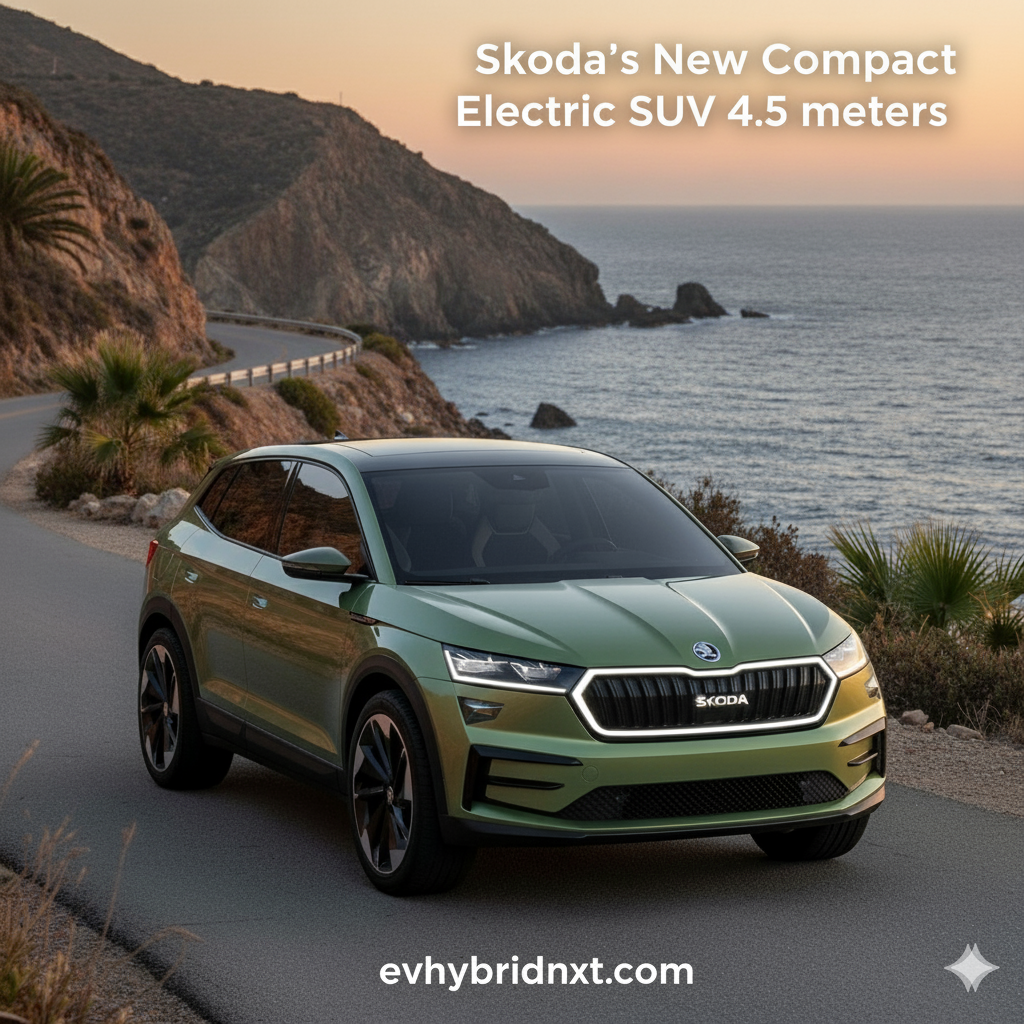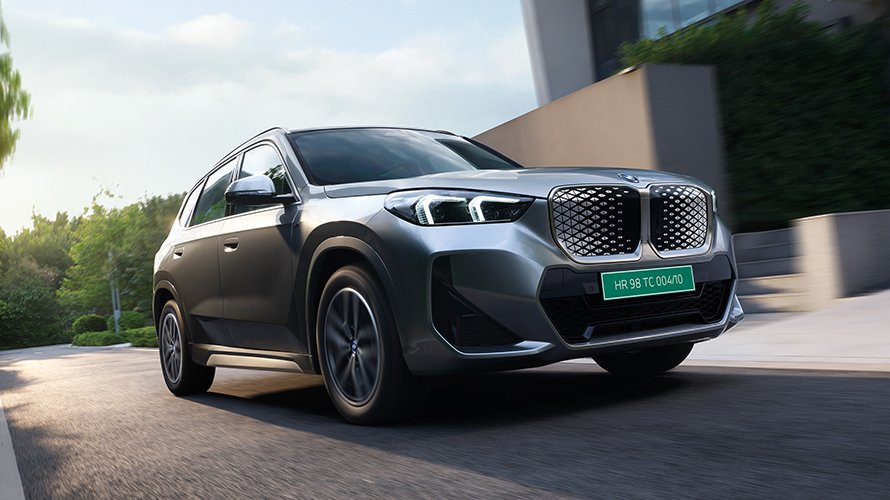Skoda Auto has confirmed its commitment to India’s booming electric vehicle (EV) market with plans to develop a new compact electric SUV designed specifically for Indian buyers. Unlike the European-focused Epiq, a 4.1-meter subcompact EV unveiled in March 2024, this India-centric model will not be a derivative but a bespoke offering, measuring around 4.5 meters in length and built on the locally adapted CMP21 platform. This move underscores Skoda’s strategy to prioritize region-specific vehicles tailored to Indian preferences for spacious, family-oriented SUVs with strong road presence, rather than adapting its European portfolio.
As India’s EV adoption accelerates—projected to hit 30% by 2030—Skoda aims to capture a slice of the compact SUV segment, currently dominated by players like the Tata Nexon EV, Mahindra XUV400, and Maruti e-Vitara. With a launch expected by late 2026 or early 2027, here’s what we know about Skoda’s ambitious EV plans for India and how they align with local market dynamics.
A Made-for-India Electric SUV: Bigger, Bolder, Family-Focused
The new electric SUV, yet to be named, will measure approximately 4.5 meters, making it significantly larger than the Epiq, which was designed for Europe’s urban-centric buyers seeking compact mobility solutions. Skoda’s decision to go bigger reflects a deep understanding of Indian consumer preferences, where SUVs are favored for their versatility, commanding stance, and ability to serve as primary family vehicles. Unlike the Epiq’s 4.1-meter length and city-friendly dimensions, the Indian model will compete in the compact SUV space, taking on rivals like the Hyundai Creta EV and MG ZS EV.Key highlights of the upcoming SUV include:
- Platform: Built on the CMP21 architecture, a cost-optimized EV platform originally developed by SAIC in China for Volkswagen Group brands. Localized for India at Skoda’s Pune R&D center, it supports high ground clearance (essential for Indian roads) and cost-effective battery integration.
- Size and Design: At 4.5 meters, it will offer a longer and wider footprint than the Epiq, prioritizing cabin space for five occupants and a larger boot for family road trips. Expect Skoda’s signature “Modern Solid” design language, with sharp lines, a minimalist grille, and sleek LED lighting.
- Battery and Range: While specifics are under wraps, the SUV is likely to offer a 50-60kWh battery, delivering a real-world range of 350-450km, aligning with competitors. It may support 100kW+ DC fast charging, leveraging India’s expanding charging network.
- Features: Anticipate a 10-12-inch touchscreen with wireless Apple CarPlay/Android Auto, Level-2 ADAS (adaptive cruise control, lane assist), and premium interiors with sustainable materials, building on Skoda’s Slavia and Kushaq templates.
Skoda’s focus on a larger SUV caters to India’s love for vehicles that balance urban maneuverability with highway capability, offering ample space for families and luggage—a key differentiator from the Epiq’s urban runabout ethos.Why Not the Epiq? Understanding India’s SUV ObsessionThe Epiq, priced at around €25,000 (₹22 lakh) in Europe, is a stylish subcompact EV with a 400km WLTP range, targeting city dwellers in markets like Germany and France. Its compact 4.1-meter length and 220-liter boot make it ideal for tight European streets but less suited for India, where buyers prioritize space, ground clearance, and multi-purpose utility. X posts from Indian auto enthusiasts reflect this sentiment, with many praising Skoda’s decision to avoid a “small hatch” in favor of a “proper SUV” for families.
India’s SUV market share has surged to over 50% in 2025, driven by models like the Maruti Grand Vitara and Hyundai Creta. Skoda’s existing Kushaq (4.2 meters) already enjoys success in the compact SUV segment, and the new electric model will build on this by offering a slightly larger footprint to compete in the ₹20-30 lakh EV space. By skipping the Epiq, Skoda avoids direct competition with smaller EVs like the Tata Tiago EV or Citroën ë-C3, focusing instead on a segment with higher margins and demand.
The CMP21 Platform: A Game-Changer for Cost and Localization
The CMP21 platform is central to Skoda’s India EV strategy. Originally developed by SAIC for affordable EVs in China, it’s being tailored at Skoda’s Pune facility to meet Indian needs, such as:
- High Localization: Skoda aims for 80-90% local content to leverage FAME-III subsidies (up to ₹10,000 per kWh) and reduce costs. Batteries may be sourced from Indian partners like Tata AutoComp, slashing import duties.
- Adaptability: The platform supports front-wheel and all-wheel-drive configurations, with flexible battery sizes. Its robust design accommodates India’s uneven roads, ensuring durability.
- Export Potential: Built at the Chakan plant, the SUV could be exported to right-hand-drive markets, boosting Skoda’s global EV footprint.
This platform allows Skoda to keep prices competitive, targeting ₹20-25 lakh ex-showroom, undercutting premium EVs like the BYD Atto 3 (₹24 lakh) while offering more space than the Maruti e-Vitara.
Challenges and Opportunities
Opportunities:
- Market Timing: With India’s EV charging network expanding (100,000 stations targeted by 2026) and government incentives, the timing is ripe for a premium yet accessible electric SUV.
- Brand Strength: Skoda’s Slavia and Kushaq have built trust for quality and driving dynamics. The new SUV could leverage this to challenge Tata’s EV dominance.
- Global Appeal: Local production could make India a hub for exporting the SUV, mirroring Maruti’s e-Vitara strategy.
Challenges:
- Competition: The compact EV SUV segment is crowded, with the Tata Curvv EV, Mahindra XUV400, and upcoming Hyundai Creta EV offering strong range and features at similar prices.
- Infrastructure: Limited fast-charging outside metros could deter buyers, despite the SUV’s projected 400km+ range.
- Perception: Skoda must convince buyers to choose its EV over established ICE SUVs like the Creta, especially if priced at a premium.
India Launch and Pricing Outlook
While Skoda hasn’t confirmed an exact launch date, industry reports suggest a late 2026 or early 2027 debut, following extensive local testing. The estimated ₹20-25 lakh price range positions it as a premium alternative to the Tata Punch EV (₹10-15 lakh) but below luxury EVs like the Mercedes-Benz EQA. High localization and subsidies will be key to keeping it affordable.
| Model | Est. Price (₹) | Range (km) | Length (m) |
|---|---|---|---|
| Skoda EV SUV | 20-25 lakh | 350-450 | ~4.5 |
| Tata Curvv EV | 17-22 lakh | 400-500 | 4.3 |
| Maruti e-Vitara | 20-25 lakh | 400-550 | 4.3 |
| MG ZS EV | 19-25 lakh | 400-450 | 4.3 |
Conclusion:
Skoda’s Smart Bet on India’s EV FutureSkoda’s decision to develop a bespoke 4.5-meter electric SUV for India, bypassing the Epiq, reflects a savvy understanding of local needs. By leveraging the CMP21 platform and focusing on family-friendly space, the Czech brand is poised to make a strong entry into India’s competitive EV market. While challenges like infrastructure and pricing remain, the SUV’s blend of size, features, and Skoda’s reputation could make it a hit among urban families and young professionals. As Skoda gears up for 2027, this EV promises to be a bold step toward electrified mobility with an Indian twist.



